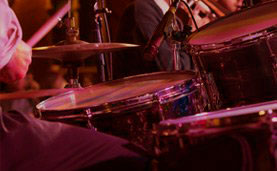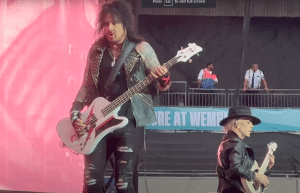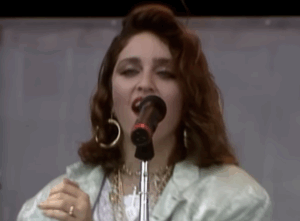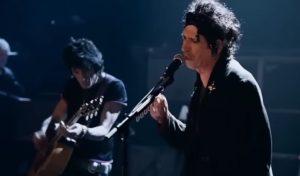Rockers That Were Shamed For Lip Syncing On Stage
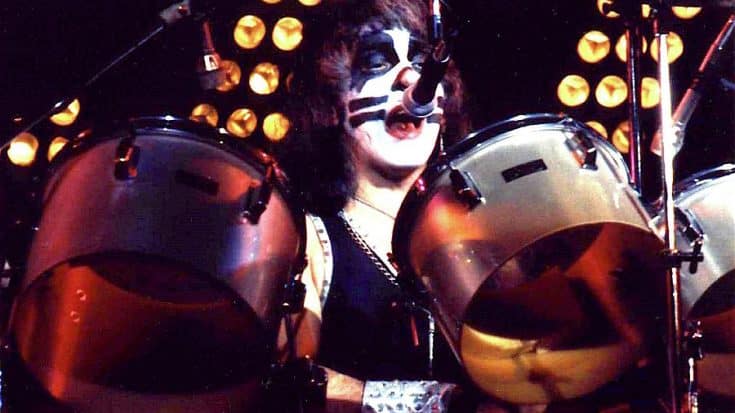
via @kiss_archives / Instagram
There’s nothing more embarrassing in rock music than getting caught lip-syncing. It’s a stain that’s hard to wash off, especially in a genre built on raw energy, authenticity, and the electricity of live performance. Yet even some of the biggest names in rock have been exposed for faking parts of their shows, sometimes in front of thousands of fans and millions of viewers at home.
Over the years, a surprising number of major bands have been caught relying on pre-recorded vocals, mimed instruments, or full backing tracks to smooth out their live sound. Some incidents were small slip-ups that went viral, while others triggered lawsuits, public defenses, and heated feuds between rock legends. From timing mistakes to unplugged guitars on the world’s biggest stage, these moments reveal how even the most seasoned artists can slip when the “live” part of live performance isn’t exactly live.
Below is a look at the most notorious cases — not to shame the artists, but to understand the stories, mishaps, and chaotic clips that pushed these incidents into rock history.
KISS
KISS has always thrived on spectacle — explosions, towering stages, and four larger-than-life personas that turned their concerts into something closer to comic-book theater than a typical rock show. From their earliest years, the band understood the power of visuals, and that sense of scale became part of their identity as they traveled the world. Paul Stanley and Gene Simmons kept the engine running across decades, turning the group into a cultural brand as much as a band.
That same obsession with precision and showmanship eventually blurred the line between “live” and polished presentation. During their 2022 tour, small timing slips revealed just how carefully constructed some performances had become. When Eric Singer entered a transition one bar late during Detroit Rock City in Belgium, the entire illusion cracked open. Paul Stanley’s voice kept singing even as he stepped away from the mic, pyro hit cues that didn’t match the moment, and fans realized something wasn’t lining up.
A similar moment in Argentina spread quickly online when Gene Simmons’ vocals continued even as he backed away from the microphone, exposing another layer of pre-recorded elements. And in a softer moment meant to feel intimate, Singer sat at a piano during Beth but forgot to mime along entirely. The track played on without him, turning a quiet ballad into another viral example of just how precarious a tightly controlled show can become when the edges slip.
Motley Crue
Motley Crue came of age in an era built on excess — louder riffs, bigger hair, and a swagger that matched the neon lights of the Sunset Strip. Their shows were chaotic by design, fueled by Nikki Sixx’s songwriting, Tommy Lee’s acrobatics, Vince Neil’s familiar wail, and Mick Mars’ razor-edged guitar work. They were never the most polished band, but they were always entertaining, and that reputation carried them long past their heyday.
In recent years, though, the rough edges haven’t been from wild behavior — they’ve come from technology showing through the seams. When Mick Mars filed a lawsuit against the band in 2023, one of his most striking claims was that a significant portion of their live sound came from tracks rather than from the players onstage. Fans didn’t have to stretch far to believe it, given circulating clips that showed Sixx pumping his fist in the air while the bass line kept chugging along clean and uninterrupted.
Other moments reinforced the suspicion. Vince Neil’s vocals sometimes sounded too smooth to match his visible struggle, and during a stadium tour stop, Tommy Lee was seen walking toward his drum kit while the cymbals rang out loud and clear. Whether these were safety nets, performance choices, or signs of a deeper shift, the result was the same: long-time fans felt something essential about a Crue show had changed.
Red Hot Chili Peppers
Red Hot Chili Peppers built their reputation on the tension between discipline and chaos — Flea’s elastic bass lines, Chad Smith’s heavy groove, and the unpredictable magnetism of Anthony Kiedis. Their best performances feel loose and alive, rhythmic and sweaty, like music pulled straight out of a garage and dropped into an arena. Over the years, they’ve tried to protect that identity even as the stages got bigger and the stakes got higher.
That’s partly why their Super Bowl 48 appearance caused such a stir. The moment they hit the stage, sharp-eyed viewers noticed something off: their instruments weren’t plugged in. It didn’t take long for the internet to come alive with accusations of fakery, aimed at a band long admired for their raw, physical approach. For a group that had built a career on spontaneity, it felt like a strange betrayal.
Flea eventually addressed the controversy head-on, explaining that the NFL left them no choice. With only minutes to set up, the league insisted all instruments be pre-recorded to avoid technical disasters on the biggest television event of the year. The vocals were live, but everything else had to be mimed. It wasn’t their preference, but it was the only way to take part in a once-in-a-lifetime opportunity — even if it meant breaking the illusion for millions watching.
Bon Jovi
Bon Jovi has long been associated with professionalism — a well-oiled rock machine that built its empire on big choruses, polished production, and endless touring. Their live shows became known for consistency rather than unpredictability, a quality that helped them cross over from hard rock to mainstream pop audiences throughout the ’80s and ’90s. They cultivated an image of reliability, the kind of band that always delivers exactly what fans expect.
That’s why their appearance on Spain’s Antena 3 stands out so sharply. In an environment that demanded lip-syncing, the band ended up delivering one of the more awkward mimed rock performances to circulate online. Jon Bon Jovi’s movements didn’t quite match the vocal track, the band’s gestures felt strangely disconnected, and the whole thing carried the energy of musicians who knew exactly how absurd the situation was.
The moment was quickly passed around by fans who weren’t used to seeing Bon Jovi caught off balance. It wasn’t scandalous, but it was undeniably clumsy — a reminder that even the most seasoned and tightly rehearsed acts can stumble when placed in artificial situations that strip away the natural flow of a live performance.
W.A.S.P.
W.A.S.P. carved their place in the ’80s metal landscape by embracing theatrics darker and more provocative than many of their peers. Led by Blackie Lawless, the band built a reputation on shock value, gritty riffs, and a stage presence that often felt more like a ritual than a concert. Their fans expected spectacle, and for decades, the group delivered it—sometimes with fire, sometimes with blood, and always with a sense of performance that pushed boundaries.
That long-standing commitment to drama is partly why a later-era live mishap became such a talking point. During a 2019 show in Sweden, Lawless wandered across the stage, caught in a moment of distraction, when his lead vocals suddenly blasted through the PA. He was nowhere near the microphone. The band was deep into the song, yet the voice carrying the performance wasn’t coming from the man the crowd was watching. The disconnect was striking enough that the clip spread quickly among fans who were used to W.A.S.P. looking dangerous—but never disorganized.
The night didn’t get smoother. Guitarist Doug Blair could be seen rushing toward his microphone in a near-panic once he realized a backup vocal cue was about to roll without him. His sprint became another piece of evidence that the show leaned heavily on pre-recorded parts. Eventually, Lawless brushed off the criticism by casually admitting they used tracks, but the moment stood out: not because W.A.S.P. used technology, but because the illusion slipped at the exact moment the band was trying to look its most commanding.
Santa Cruz
Santa Cruz emerged from Finland’s rock scene with a sound that blended sleazy Sunset Strip glam with modern flash. They came up fast, leaning into big hooks, flashy guitar work, and a youthful swagger that made them easy to market. For a while, they looked like the kind of band that could bridge generations—nostalgic enough for older fans, polished enough for younger listeners discovering loud guitars for the first time.
But their rise also came with turbulence, and nothing captured that more clearly than a viral performance that exposed their dependence on backing tracks. During the show, the vocals continued at full force even as the band’s movements drifted far from the rhythm. It wasn’t a subtle slip; it was the kind of disconnect that spreads across social media in minutes. For a band eager to prove their authenticity in a crowded rock landscape, it was the worst possible moment for the illusion to fall apart.
The backlash hit fast, and radio personality Eddie Trunk blasted the performance as another example of rock drifting away from live musicianship. Instead of retreating, frontman Archie Cruz doubled down, saying the whole thing was a deliberate publicity stunt designed to get people talking. Whether that explanation was genuine or damage control is anyone’s guess, but it didn’t quiet the debate. If anything, it added to the spectacle—another messy, loud, very modern chapter in the band’s story.
Fozzy
Fozzy built their identity on the crossover charisma of frontman Chris Jericho, whose fame from wrestling gave the band a built-in spotlight. Over time, they carved out a dedicated fanbase through relentless touring and a sound that blends modern metal crunch with big, radio-friendly choruses. They’ve always presented themselves as a high-energy live act, the type of band that thrives on crowd involvement as much as on technical precision.
That image took a hit when Jericho publicly acknowledged that the band uses pre-recorded tracks during certain parts of their shows. His admission wasn’t framed as an apology; he described it as a practical reality of current touring standards, a way to keep things consistent from night to night. But once he said it, fans began circulating videos showing moments where the vocals didn’t quite match his physical performance. The more clips surfaced, the louder the conversation grew.
What made the situation even messier was the reaction from other rock figures. Sebastian Bach, always outspoken, called out Jericho for relying on tracks, kicking off a very public back-and-forth online. The controversy didn’t stop Fozzy from touring or recording, but it did shift how some fans viewed the band’s “live” credentials. Instead of a scandal that faded, it became another piece of the ongoing argument about what modern rock shows should be—and how far technology should go.
Falling in Reverse
Falling in Reverse built their sound around the merging of metalcore aggression, glossy production, and digital elements that pushed the boundaries of what rock bands could incorporate onstage. Ronnie Radke’s larger-than-life personality shaped their identity: bold, polarizing, and always straddling the line between innovation and controversy. Their shows were designed to feel big and cinematic, with layers of audio and visual production working together.
That reliance on production became the center of a storm when the band canceled a festival appearance at the last minute because they had lost their laptops. Radke defended the decision by explaining that the tracks contained essential parts of the show—comparing it to trying to drive a car without an engine. For supporters, it was an honest explanation of how modern bands blend live elements with programmed ones. For critics, it was proof that the shows were too dependent on technology.
The conversation snowballed when Eddie Trunk and Sebastian Bach attacked the band online, framing the decision as a sign of weak musicianship. Radke fired back with equal force, pointing out that even Bach’s shows use computers for intros and transitions. The feud ran hot across social media, with Radke eventually poking fun at the controversy during the band’s Aftershock performance. Instead of shrinking from the criticism, he folded it into the band’s narrative, turning a logistical failure into another headline.
Iron Maiden
Iron Maiden’s legacy is built on musicianship, storytelling, and a commitment to giving fans a fully live show. Their galloping rhythms, soaring vocals, and elaborate stage designs turned them into one of the most influential metal bands of all time. For decades, they’ve held tightly to the idea that live performance should feel organic—mistakes and all. It’s part of why their concerts still feel electric, even after forty years on the road.
That philosophy made their appearance on the German TV show Pit an unforgettable moment. Forced to mime due to the program’s strict rules, Maiden decided to turn the entire performance into a joke at the show’s expense. Steve Harris grabbed a guitar, Dave Murray put on Harris’s bass, and the band swapped instruments mid-song with complete disregard for the footage being recorded. They weren’t trying to fool anyone; they were openly mocking the premise.
The result became one of the most beloved “fake” performances in metal history. Fans still share clips of the band clowning around, drumming out of time, and smiling through a performance that was never meant to look real. Instead of playing along with the charade, Maiden exposed how absurd miming can be—proving that authenticity isn’t just about the notes you play, but the attitude you bring to the stage.
Nirvana
Nirvana never fit the mold of a traditional rock band, and they never tried to. Their rise in the early ’90s came from raw emotion, rough edges, and a distaste for anything that felt manufactured. Kurt Cobain, Krist Novoselic, and Dave Grohl built their reputation on honesty—musical and otherwise—which made them the last band anyone expected to play along with fake performance rules.
That’s exactly why their 1991 appearance on Top of the Pops became legendary. When the show insisted they mime to a pre-recorded instrumental track, the band refused to treat the situation seriously. Cobain strummed his guitar lazily before taking his hands off it entirely, Grohl hit drums out of time on purpose, and Novoselic swung his bass around like a prop. The whole performance felt like a surreal parody designed to embarrass the show, not themselves.
The highlight came when Cobain delivered the vocals in a deep, haunting, almost mocking voice completely unlike the original recording. It wasn’t subtle—it was a statement. And it became one of the most iconic televised moments of Nirvana’s career, a perfect embodiment of their rebellion against anything that felt fake or forced.


